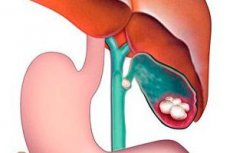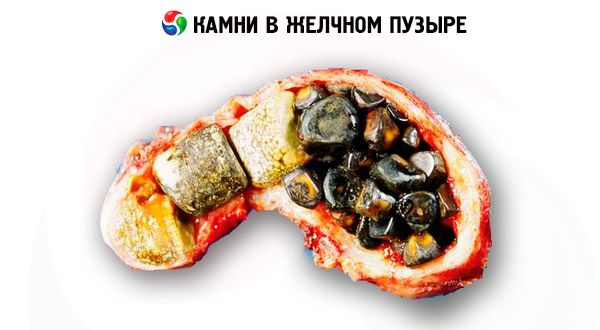Medical expert of the article
New publications
Chronic calculous cholecystitis.
Last reviewed: 07.07.2025

All iLive content is medically reviewed or fact checked to ensure as much factual accuracy as possible.
We have strict sourcing guidelines and only link to reputable media sites, academic research institutions and, whenever possible, medically peer reviewed studies. Note that the numbers in parentheses ([1], [2], etc.) are clickable links to these studies.
If you feel that any of our content is inaccurate, out-of-date, or otherwise questionable, please select it and press Ctrl + Enter.

Chronic calculous cholecystitis is the most common disease of the gallbladder and is characterized by an almost constant combination of chronic cholecystitis and stones.
This explains the complete coincidence of etiological factors in chronic calculous cholecystitis and the formation of gallstones. Chronic inflammation may be preceded by acute cholecystitis, but it usually develops gradually.
Pathomorphology
Usually the gallbladder is reduced in size, its walls are thickened, sometimes calcified, the lumen contains turbid bile with clots, called bile putty. Stones are loosely located in the wall of the bladder or cells of overgrown fibrous tissue, one of them is usually trapped in the neck. The mucous membrane is ulcerated and cicatricially changed, histologically thickening and stagnant plethora of the wall with lymphatic infiltration are noted. Sometimes the mucous membrane is completely destroyed.
Symptoms of chronic calculous cholecystitis
The disease is difficult to diagnose due to the lack of specific symptoms. Chronic cholecystitis is suggested by a family history of gallstones, previous episodes of jaundice, multiple births, and obesity. Sometimes, episodes of acute cholecystitis or attacks of biliary colic indicate chronic cholecystitis.
Bloating and discomfort in the epigastric region are typical, which are often associated with the intake of fatty foods and are reduced by belching. Many patients complain of nausea, but in the absence of choledocholithiasis, vomiting rarely occurs. In addition to constant aching pain in the right hypochondrium, irradiation to the area of the right shoulder blade, behind the sternum and to the right shoulder is noted. Alkalis can relieve pain that occurs after eating.
Characteristic features include pain on palpation of the gallbladder and a positive Murphy's sign.
Where does it hurt?
What's bothering you?
Diagnosis of chronic calculous cholecystitis
Body temperature, white blood cell count, hemoglobin level, and ESR are all normal. Plain abdominal radiographs may show calcified gallstones, but ultrasound is the imaging modality of choice, as it shows gallstones within a fibrotic, thick-walled gallbladder. Failure to visualize the gallbladder also indicates gallbladder disease. Oral cholecystography usually shows a nonfunctioning gallbladder. CT may show gallstones, but is not indicated for the diagnosis of chronic cholecystitis.
 [ 12 ], [ 13 ], [ 14 ], [ 15 ], [ 16 ]
[ 12 ], [ 13 ], [ 14 ], [ 15 ], [ 16 ]
Differential diagnosis
The main symptoms of chronic cholecystitis are fat intolerance, flatulence and discomfort after eating; however, the symptoms cannot always be explained by the presence of gallstones, even verified ones, since cholelithiasis is often asymptomatic.
To avoid unnecessary surgery, other causes of such disorders should be excluded before planning a cholecystectomy: gastric and duodenal ulcers, esophageal hernia, irritable bowel syndrome, chronic urinary tract infections, and functional dyspepsia. Before surgery, the patient's psychological profile should be carefully examined.

The presence of cholelithiasis in 10% of young and middle-aged patients may be the reason for overdiagnosis of clinically manifested cholelithiasis. At the same time, with the sensitivity of ultrasound and oral cholecystography equal to approximately 95%, gallbladder disease sometimes remains undetected.
What do need to examine?
Who to contact?
Cholecystectomy for chronic calculous cholecystitis
Cholecystectomy is indicated for clinical manifestations of cholelithiasis, especially with repeated pain attacks. Since laparoscopic removal of common bile duct stones is technically difficult, requires special instruments, and is beyond the competence of most surgeons, if choledocholithiasis is suspected, endoscopic cholangiography and papillosphincterotomy with stone extraction should be performed before laparoscopic or traditional cholecystectomy. An alternative approach is intraoperative cholangiography, revision of the common bile duct, stone removal, and insertion of a T-shaped drainage.
Many postoperative complications are caused by infection, so microbiological examination of bile is necessary. T-shaped drainage is left for an average of 2 weeks, before its removal cholangiography is performed.
After uncomplicated cholecystectomy, a slight transient increase in serum bilirubin and serum transaminase activity may occur. A significant increase in these parameters indicates an unremoved common bile duct stone or bile duct injury.
More information of the treatment
Prognosis of chronic calculous cholecystitis
The prognosis for life with chronic cholecystitis is good, but once symptoms appear, especially in the form of hepatic colic, they persist; the probability of relapse within 2 years is about 40%. Gallbladder cancer develops very rarely at a late stage of the disease.
If the diagnosis is unclear, conservative therapy may be performed during the observation period. This is especially important in the case of vague symptoms, a functioning gallbladder, and the presence of contraindications due to the general condition of the patient.
In case of obesity, weight loss measures should be recommended. In case of non-functioning gallbladder, a low-fat diet is recommended. Thermal processing of fats should be excluded, since its products are poorly tolerated.

